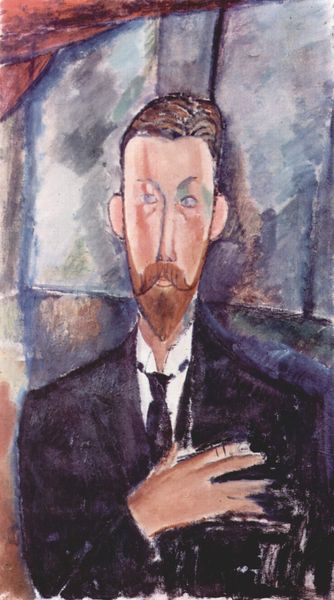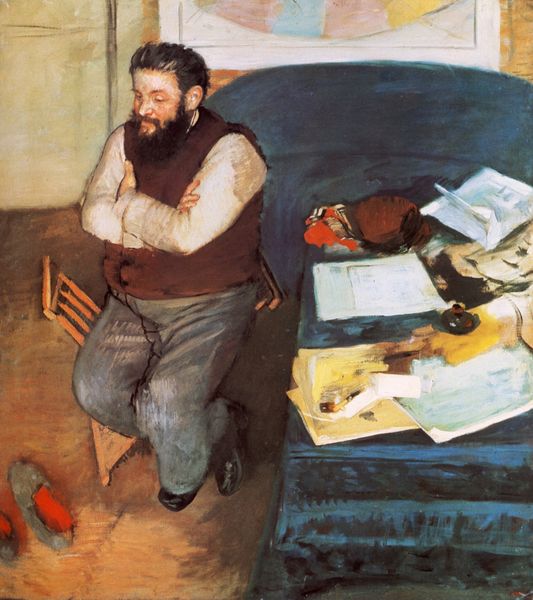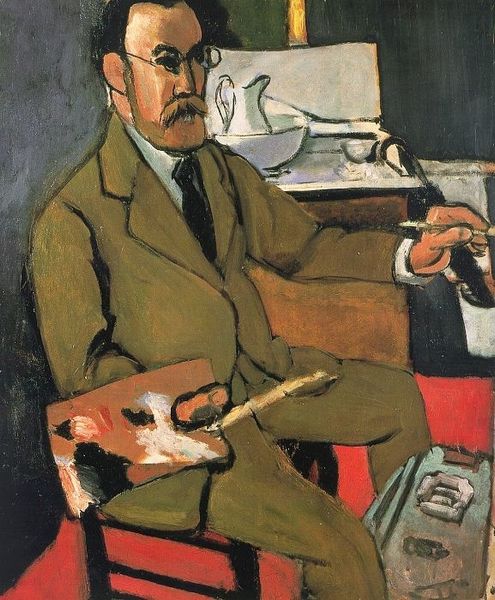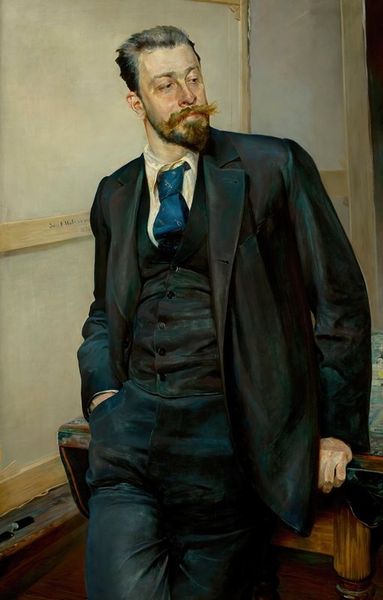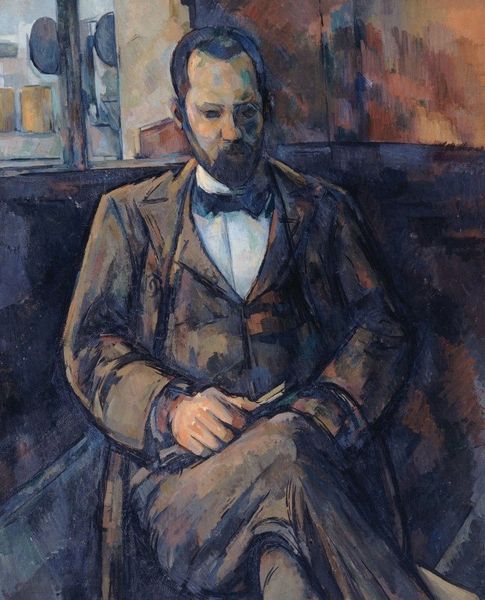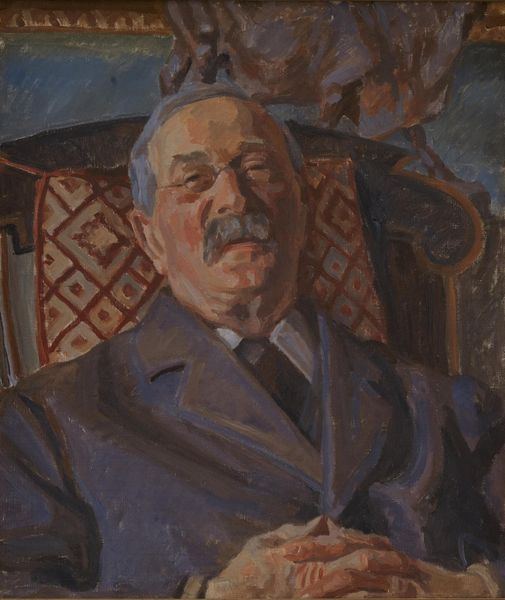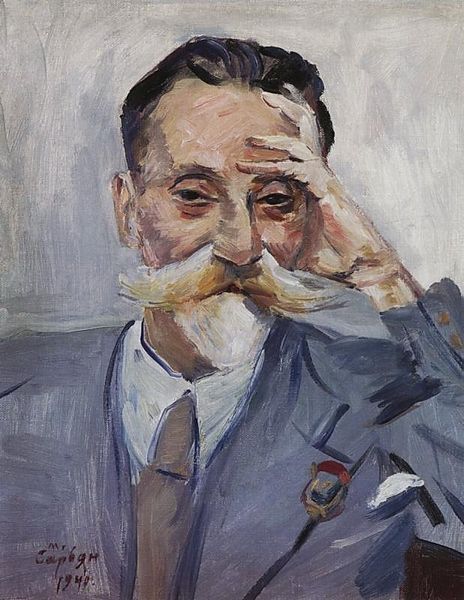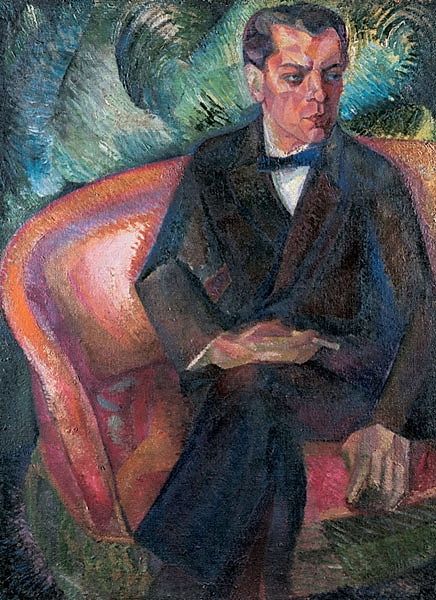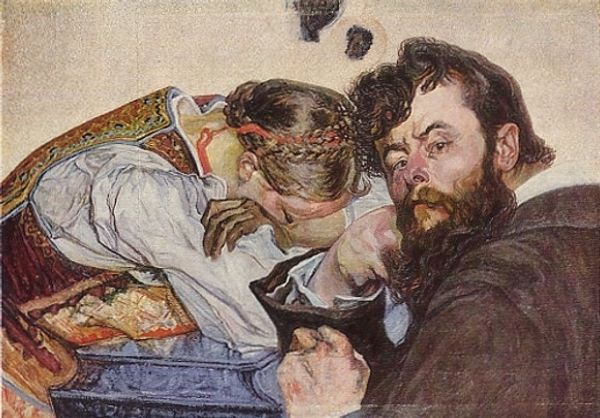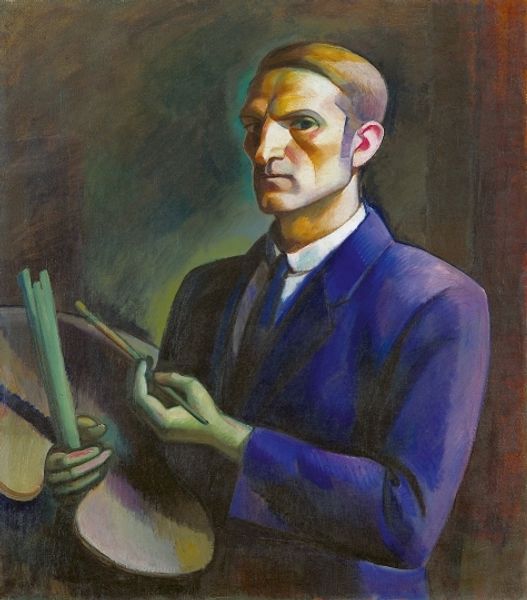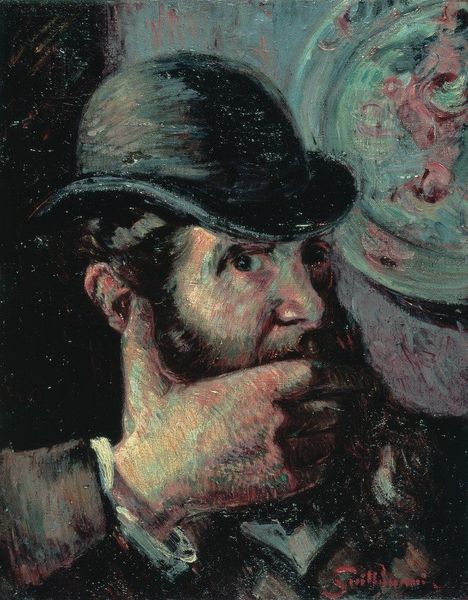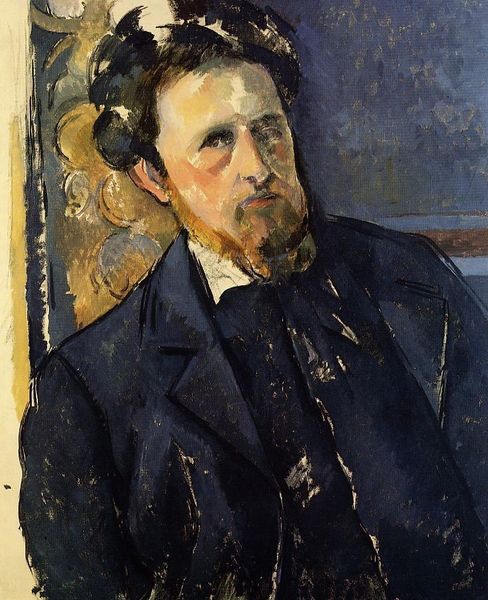
painting, oil-paint
#
portrait
#
painting
#
oil-paint
#
oil painting
#
portrait art
#
modernism
#
realism
Copyright: Wyndham Lewis,Fair Use
Curator: Let’s consider Wyndham Lewis's 1939 oil painting, "Ezra Pound". What's your immediate response to it? Editor: My initial thought is a certain stillness, almost melancholy. The somber hues and the subject’s posture evoke a sense of introspection. Look at the textures in that heavy tweed. Curator: Indeed. This piece was created during a turbulent period in history, on the cusp of World War II, when both Lewis and Pound grappled with their positions within a rapidly changing socio-political landscape. What do you think Lewis is doing in choosing these materials? Editor: The choice of oil paint lends itself to the creation of deep shadows, emphasizing a heavy mood. And I think Lewis draws our eye to the everyday labor of thinking—the glass, the papers, the ash tray. It’s more an intellectual's workspace than a portrait, maybe. The details seem carefully arranged— almost like props. Curator: Interesting take. Pound's complex, often contradictory, ideologies deeply influenced early modernist thought, yet his later support for Fascism sparked intense debate. How does Lewis navigate that controversy, do you think? Editor: It’s tricky. On the one hand, the painting offers a level of realism, the figure in repose seems almost natural. Yet the very composition makes him appear as almost a relic, a spent force, surrounded by evidence of thought—almost as a display of the means and modes of thinking itself. Curator: This could be Lewis attempting to capture the inherent contradictions within Pound's character, or it could be a reflection of his own evolving political views during a precarious time. It might show that his beliefs changed when his association became a matter of ethics. Editor: The social and political landscape becomes yet another material that makes the work interesting. But does that change our perception of the work? Curator: Perhaps. Analyzing it through the lens of these intersections makes the portrait a point for social dialogue—maybe we consider these as an invitation to interrogate power, complicity, and accountability within artistic circles, rather than dismissing these problematic relationships altogether. Editor: Considering that, it feels even more relevant today. Examining the materials, modes of production, and context helps us engage more fully with what might have otherwise appeared a standard portrait. Curator: Precisely, situating “Ezra Pound” within a broader intersectional framework encourages deeper engagement with both art history and contemporary societal challenges.
Comments
No comments
Be the first to comment and join the conversation on the ultimate creative platform.
